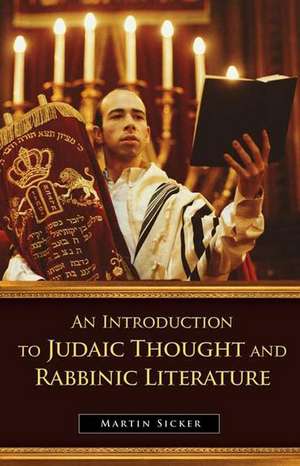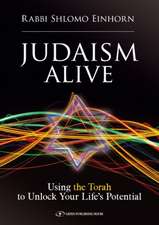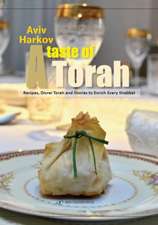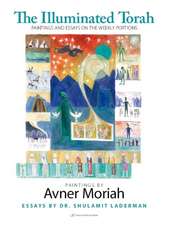An Introduction to Judaic Thought and Rabbinic Literature
Autor Martin Sickeren Limba Engleză Hardback – 29 apr 2007 – vârsta până la 17 ani
Preț: 354.30 lei
Preț vechi: 414.28 lei
-14% Nou
Puncte Express: 531
Preț estimativ în valută:
67.79€ • 70.97$ • 56.10£
67.79€ • 70.97$ • 56.10£
Carte tipărită la comandă
Livrare economică 05-19 aprilie
Preluare comenzi: 021 569.72.76
Specificații
ISBN-13: 9780275994655
ISBN-10: 0275994651
Pagini: 184
Dimensiuni: 156 x 235 x 19 mm
Greutate: 0.44 kg
Editura: Bloomsbury Publishing
Colecția Praeger
Locul publicării:New York, United States
ISBN-10: 0275994651
Pagini: 184
Dimensiuni: 156 x 235 x 19 mm
Greutate: 0.44 kg
Editura: Bloomsbury Publishing
Colecția Praeger
Locul publicării:New York, United States
Notă biografică
Martin Sicker is author of over 30 books on Jewish and Middle East history, geopolitics, political theory, and Biblical studies. He is a private consultant, writer, and lecturer. His books include The Rise and Fall of the Ancient Israelite States, Political Culture of Judaism, The Islamic World in Ascendency, The Middle East in the Twentieth Century, and many others.
Cuprins
Introduction1. The TaNaKH or Hebrew Bible2. Midrash Halakhah3. The Mishnah4. The Talmud5. Midrash Aggadah6. Law Codes and Related Literature7. Bible Commentaries8. The Contemporary State of the LiteratureNotesReferencesIndex
Recenzii
This introduction to the Talmudic literature covers writings produced by the rabbinic movement, beginning in the period of the destruction of the Jerusalem Temple in 70 CE, and continuing beyond the completion of the Babylonian Talmud to the latest rabbinic, Midrashic texts (9th and 10th centuries). Beginning with an introduction to the Hebrew Bible, foundational to all rabbinic writing, the volume covers Midrash Halakhah (that is, rabbinic exegetical works that treat biblical law), the Mishnah, the Talmuds of the Land of Israel and Babylonia, and Midrash Aggadah (that is, homiletical interpretation of the Bible's narrative passages)..Appropriate to individuals with no background in the rabbinic literature..General readers.
What Sicker makes eminently clear is that rabbinic writing and Judaic thought are not meant for casual consumption but for concentrated study. The highly complex and rich literature that has emerged from the original Books of Moses now has a highly complex and rich companion guide in Sicker's study. Recommended for libraries with scholarly studies of Judaic studies.
This volume is a good beginning for those who wish to study Mishnah, midrash aggadah, and/or law codes and related literature. The book is clearly written and the index, footnotes and list of references assist the student in taking the next step. Recommended for academic libraries and synagogues where there are serious students of Talmud.
What Sicker makes eminently clear is that rabbinic writing and Judaic thought are not meant for casual consumption but for concentrated study. The highly complex and rich literature that has emerged from the original Books of Moses now has a highly complex and rich companion guide in Sicker's study. Recommended for libraries with scholarly studies of Judaic studies.
This volume is a good beginning for those who wish to study Mishnah, midrash aggadah, and/or law codes and related literature. The book is clearly written and the index, footnotes and list of references assist the student in taking the next step. Recommended for academic libraries and synagogues where there are serious students of Talmud.












